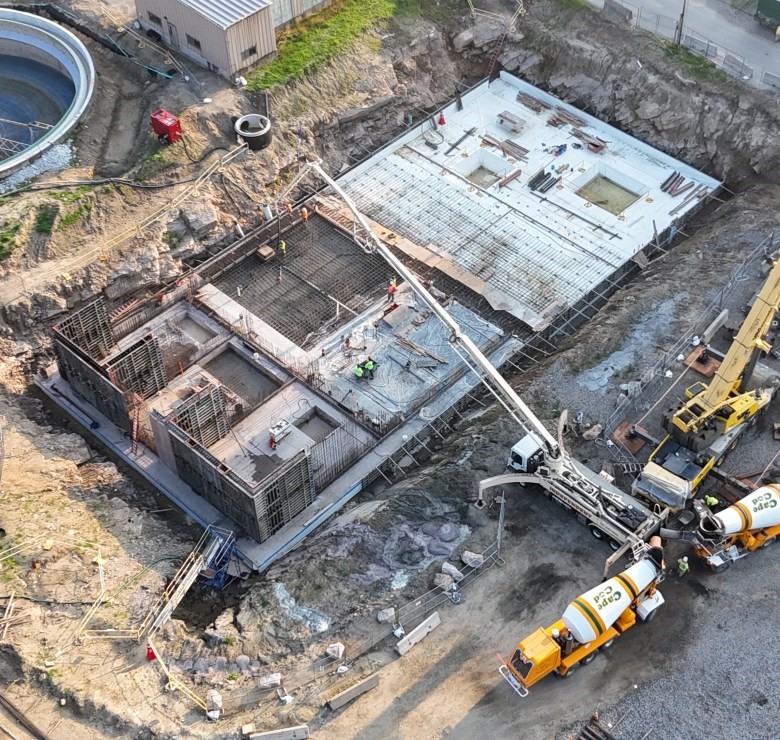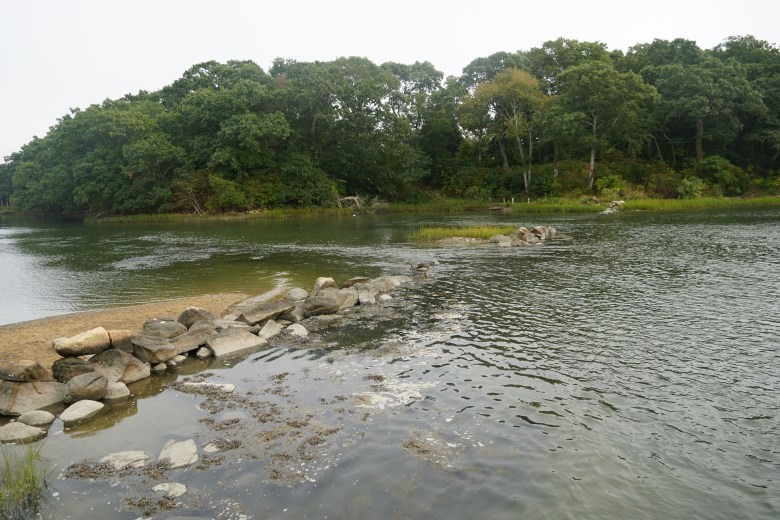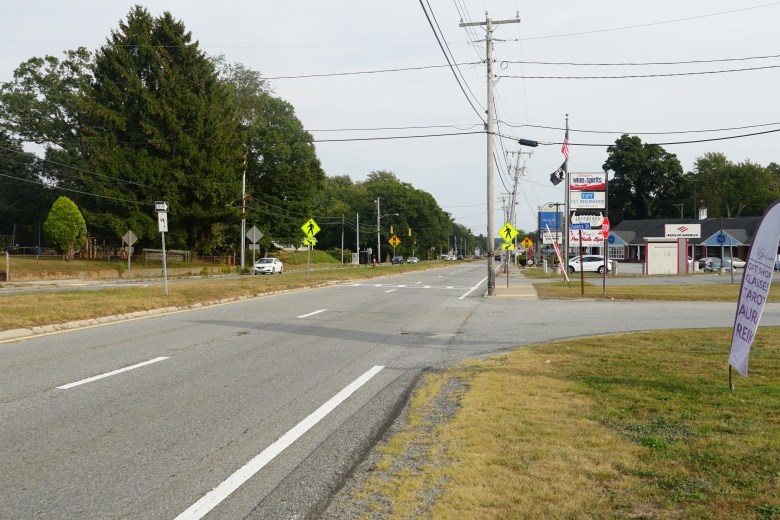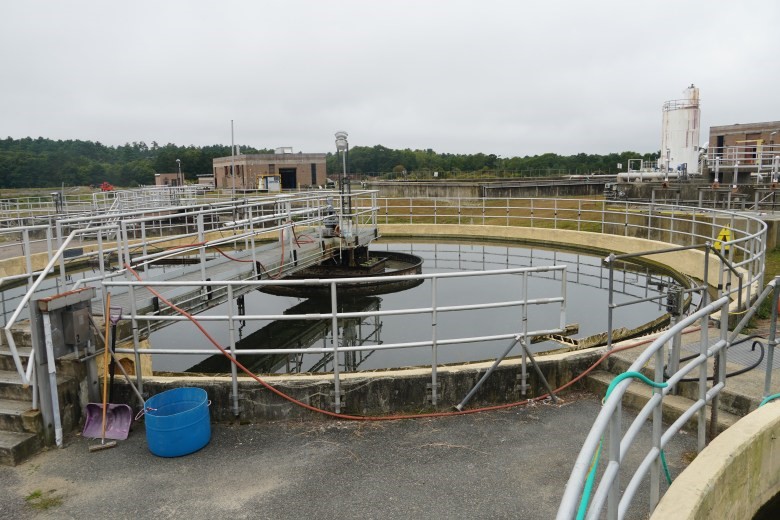‘This problem is hard, it’s expensive, and it’s not going away.’
This story was originally published in The New Bedford Light, a publication partner of Ocean State Stories.
NEW BEDFORD, Mass. — Across the South Coast, cities and towns are looking to clean up their sewage and septic systems. And they all agree on one thing: the fix won’t come cheap.
In Fairhaven, contractors are working on a $70 million upgrade to the town’s sewage treatment plant. Dartmouth is looking at more than $50 million in upgrades to its treatment facility, while officials plan to expand the sewer system for millions more.
In Westport and Acushnet, officials are seeking funds for sewer extension projects that will run tens of millions of dollars. Wareham faces one of the biggest price tags: it’s not only spending $36 million on fixing its sewage treatment plant now, it’s also looking to invest more than $500 million over the next 20 years to bring sewers to half of the town.
Even New Bedford, which has already invested more than $460 million in water quality improvements since the 1990s, is spending hundreds of millions more to further address pollution from its combined sewer overflows.
South Coast leaders say that while these costs are high, it’s urgent to upgrade sewer infrastructure now and get more homes off septic systems. The state has issued legally-enforceable nitrogen reduction targets for local waters. And surrounding communities that don’t take action to address their human waste will face costlier state mandates, like those put in place on Cape Cod last year that threaten to cost thousands of homeowners tens of thousands of dollars each.
“The goal is to stay ahead of the game,” said Wareham Water Pollution Control Director Scott Kraihanzel. “You’re gonna pay now, or you’re gonna pay a lot more later.”
Nitrogen pollution has plagued Buzzards Bay for decades, a product of growing development in its surrounding communities. Most of the problem comes from human waste: both sewage and the 50,000-plus septic systems within the watershed. Roughly half of them lie within South Coast towns.
So state environmental regulators have been pushing South Coast towns in four smaller watersheds to cut their sewage and septic-system pollution. Leaders in these towns are responding to this pressure.
Yet the costs of sewage-related and septic-related infrastructure projects are immense, and funding generally comes in the form of low-interest loans from the state — which must be paid off by residents or sewer users. Cities and towns are also running into political and regulatory hurdles in developing these projects.
The nitrogen problem
The biggest long-term threat to the health of Buzzards Bay is nitrogen pollution.
“It attacks the foundation of the ecosystem,” said Korrin Petersen, vice president of clean water advocacy at the Buzzards Bay Coalition.
Nitrogen is a nutrient that helps plants grow. It enters the bay through groundwater — which feeds rivers and streams — or in runoff from storms.
Human waste, in sewage and from septic systems, is the largest contributor of nitrogen pollution to Buzzards Bay. Approximately 70% of that load comes from septic systems, according to the Buzzards Bay Coalition. Other common sources of nitrogen include fertilizers and vehicle emissions.
While some nitrogen naturally occurs in Buzzards Bay, an excess leads to overgrowth of algae. This makes waters murky, degrades fish and shellfish habitat, limits recreational activity, and harms property values.
Massachusetts must list waters that do not meet its federally-approved water quality standards as “impaired.” Many of the harbors, coves, and tidal rivers on Buzzards Bay have been listed as nutrient-impaired over the last two decades, largely due to nitrogen.
The state has stepped up efforts to cut nitrogen pollution from sewage and septic systems in southeastern Massachusetts waters, under threat of a lawsuit from the Conservation Law Foundation.
In 2023, Massachusetts enacted regulations requiring Cape Cod communities in nitrogen-sensitive watersheds to pay for a watershed permit within two years, and develop a 20-year plan to cut contributions.
Otherwise, these communities must upgrade all of their septic systems that fall within those watersheds to denitrifying models by 2028. One study found those can cost between $30,000 and $40,000 per household, on average.
Here on the South Coast, Massachusetts implemented legally-enforceable nitrogen loading targets for the Wareham River and the inner New Bedford Harbor this summer. They enacted similar targets for the Little and Slocums rivers in 2019, and the Westport River in 2017.
The most efficient way to cut these nitrogen loads is to expand sewer service to areas on septic systems. Yet the costs of doing that are high.
So careful long-term planning — considering cluster treatment systems and denitrifying septic systems — will be key as communities plan their investments in clean local waters, Petersen said.
“This problem is hard, it’s expensive, and it’s not going away,” she said.
Fairhaven and New Bedford make progress
Fairhaven and New Bedford are working on sewer projects that will address the state’s nitrogen pollution target for the inner harbor, under Environmental Protection Agency mandates.
State authorities estimate roughly half of the inner harbor’s nitrogen load comes from Fairhaven’s sewage treatment plant.

In 2018, the EPA ordered Fairhaven’s wastewater facility to treat sewage for nitrogen. So Fairhaven officials planned and raised funds for four new wastewater holding tanks, filled with bacteria that consume nitrogen in sewage before it is discharged. They will remove approximately 90% of the nutrient flowing out of the plant daily.
Contractors blasted the site and laid the foundation for the expansion this summer, said the town’s superintendent of public works, Vincent Furtado. The project should take another two years, and be completed on schedule and within budget.
New Bedford has also been working to cut its sewage pollution to the inner harbor, under an agreement with the EPA. The nitrogen load it contributes “is relatively small,” said Jamie Ponte, the city’s commissioner of public infrastructure.

Combined sewer overflows accounted for less than 10% of nitrogen in the inner harbor in 2006, when data was last gathered, Ponte said. That doesn’t reflect recent work to separate sewer, remove illicit connections, and upgrade pump stations.
New Bedford also contributes nitrogen from impervious surfaces. It has been planting trees and building green infrastructure projects to address this runoff. The city has been working on sewer and stormwater improvements over the last five-plus years that account for roughly $140 million in estimated spending.
Acushnet discussing sewer expansion
New Bedford’s and Fairhaven’s efforts alone will not allow the inner harbor system to meet state nitrogen goals, said Furtado. So inland towns like Acushnet must do their part by addressing their septic systems, which contribute approximately 20% of the nitrogen to the inner harbor, according to the state.
More than 70% of Acushnet is on septic systems.

Massachusetts has not yet shown data to Acushnet proving that its septic systems are contributing all of that nitrogen to the inner harbor, and not agriculture, said Acushnet Select Board Chairman Bob Hinckley.
Still, town officials have discussed expanding sewer service to address failing septic systems. Acushnet’s existing sewer system connects to New Bedford’s system, and serves more than 1,000 users.
Acushnet updated its 20-year comprehensive wastewater management plan back in 2020. It shows that to meet public health and state nitrogen goals, the town would have to bring sewer service to six priority areas, running lines down Main Street and Middle Road.
Expanding the sewers that much would cost more than Acushnet’s annual budget of $36 million. And financial constraints mean it cannot be done in one project, Hinckley said.
Acushnet recently hired a town planner, who will integrate the wastewater plan into a master plan for the town. The public will have a chance to get involved in sewer planning as the master plan is developed in coming months.
Dartmouth grapples with costs
Dartmouth officials are working on plans to cut nitrogen from sewage to the Slocums River watershed, though they’re struggling against challenges of size and uncertainty over where future development will occur.
The state estimates septic systems in the Slocums River watershed contribute roughly one-third of the nitrogen load to the river.
Rob Almy, chairman of Dartmouth’s Board of Public Works, said town officials have questions about the state’s old data showing nitrogen loads are driving poor water quality in the river. Almy said town officials believe a sandbar forming at the river’s mouth is causing much of the problem, by limiting tidal flushing of nutrients and warm waters.
The town is currently assessing the performance of its 35-year-old wastewater treatment plant, Almy said. It was designed to treat about 4 million gallons per day.
The plant is near its permitted capacity, so the town has raised concerns about how many more new sewer hookups it can handle. The system also needs repairs to its aging pumps and electrical infrastructure.
The town has raised several million dollars in grants and American Rescue Plan Act funding for urgent fixes.
Officials estimate that plant upgrades will run at least $50 million to $100 million, and be paid for over a few decades.

Dartmouth is working with the Southeastern Regional Planning & Economic Development District to get town growth projections for the next 30 years. Those projections will help Dartmouth update its comprehensive wastewater management plan, which will guide sewer expansion.
Dartmouth is the fifth-largest town in Massachusetts by land area. The sewer system serves roughly half of Dartmouth. A lot of the Slocums River watershed falls outside of the existing sewer area.
While extending sewer lines to all of its rural sections is one way to meet the state’s nitrogen target, that would be “extremely expensive,” said Dartmouth Public Works Director Tim Barber. So would upgrading septic systems in the watershed to models that remove nitrogen.
Dartmouth is developing a pilot project with the Buzzards Bay Coalition to convert 20 homes on septic systems to sewer users per year in the Apponagansett Bay watershed. Almy hopes to apply lessons from that project to the Paskamansett and Slocums rivers.
Animal waste and fertilizers may also contribute nitrogen to the Slocums River, Almy said. So getting farmers and residents to buy into practices designed to cut those loads will be critical.
“As long as we can explain what we’re doing, and why it makes sense, I think we’ll have support,” he said.
Westport’s sewer dilemma
Support for addressing the problem from septic systems has been hard to come by in Westport, the only community on the South Coast without any sewer system.
Last year, Westport voters rejected a tax override to fund sewer expansion. This spring, voters also rejected spending $7 million on the first phase of a planned $35 million sewer project on Route 6.

Westport has roughly 8,000 septic systems. The state says those in the Westport River watershed contribute roughly a quarter of the river’s nitrogen load.
The town’s integrated water resource management plan, from 2021, outlines plans to connect densely-populated north Westport to Fall River’s sewer system.
Westport officials were discouraged by the recent votes, said Westport Planning Board Vice Chair Bob Daylor. Yet they’re looking for another alternative. The town reconstructed its Infrastructure Oversight Committee this year, and is looking for funding sources in hopes of building a sewer system for the north end of town at a lower cost.
Ultimately, a proposal to install sewer lines on Route 6 will come back to the voters.
Daylor said a sewer boosts property values for homes that tie into it, along with benefiting the environment.
“If we don’t take a common approach, in which we all share a bit in the cost, we’re going to get a significantly larger bill in the future,” he said.
Wareham plans for sewer
Wareham is ahead of the curve when it comes to planning for the future of its sewage, said Kraihanzel, the town’s water pollution control director.
The state estimates septic systems contribute roughly one-third of the nitrogen in the Wareham River.
Since the state’s nitrogen target for the Wareham River emerged last year, town officials have been updating their 20-year comprehensive wastewater management plan. It shows that Wareham’s wastewater treatment plant will need to have 3 million gallons of sewer capacity by 2045 to meet its environmental goals.
Wareham will also need to expand the sewer to White Island Shores, East Wareham, Great Neck and Barneys Point.
While the targets are clear, acting on them is tricky.
Currently, the town’s plant handles approximately 1 million gallons of sewage per day, from roughly half the town. It was designed to handle up to 2 million gallons per day.
Upgrading the plant to handle 3 million gallons per day will cost an estimated $150 million. On top of that, planned sewer line extensions will cost an estimated $284 million, and maintenance costs may run another $60 million.
The most pressing need is to work with state and federal regulators on the plant’s discharge permit, says Wareham Sewer Commission Chair Jim Giberti.
The permit allows the town to expel 1.56 million gallons of treated sewage per day into the Agawam River.
So to increase the treatment plant’s output, Wareham officials must negotiate an increase to the discharge limit in its permit, or build an outfall in a place other than the Agawam to expel more treated sewage. That would cost millions more.
Wareham needs regulators to step forward and help them develop a plan, Kraihanzel said.
Meanwhile, contractors started work on a $36 million upgrade to Wareham’s sewage treatment plant in September. The 18-month project — which started in September — includes long-needed upgrades to the plant’s worn headworks and secondary clarifiers. They remove sludge, scum and debris from sewage during treatment. Kraihanzel says the upgrades help lay the foundation for sewer expansion.
While the costs of expanding sewer service are high, he added that Wareham should look at the “exponential” expenses Cape Cod residents are facing.
“They kept kicking the can down the road,” Kraihanzel said. “With inflation, the cost goes up and up and up. It’s not going to come back down.”
Funding the cleanup
Petersen, of the Buzzards Bay Coalition, said she’s encouraged by the direction South Coast communities are taking to address their sewage pollution. Yet there is a lot of demand for the state’s limited wastewater infrastructure funds. So the federal government needs to step up with more money.
For now, South Coast towns must work with what’s available. The Infrastructure Investment and Jobs Act put more than $1 billion into the State Revolving Fund for low-interest loans.
Petersen said that as communities spread costs around, these projects become more affordable for all residents.
“Everybody benefits from clean water,” she said. “And everybody has the opportunity to contribute to solving the problem.”
Email reporter Adam Goldstein at agoldstein@newbedfordlight.org.






